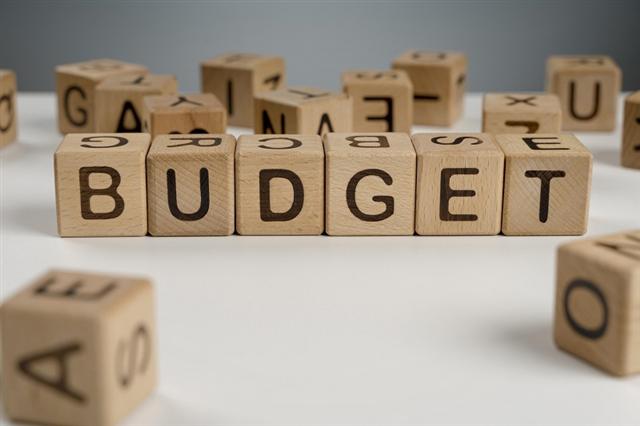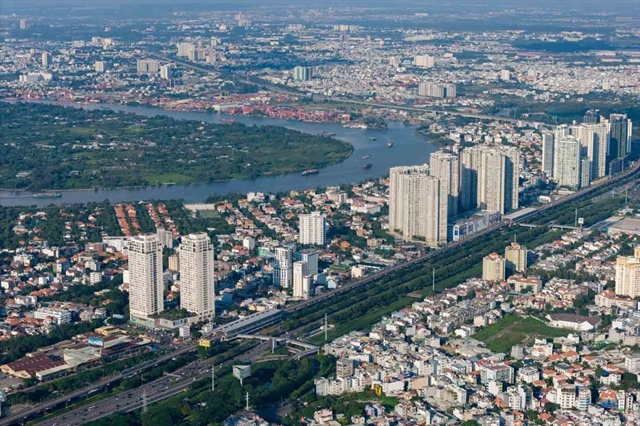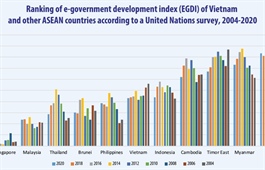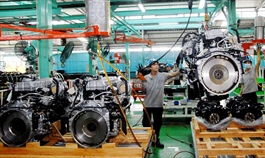Stable structure for state budget
Stable structure for state budget
Despite numerous difficulties caused by the global health crisis, the state budget has seen impressive results, with national financial security ensured.

Stable structure for state budget ( source: freepik.com)
|
Rough estimates from the Ministry of Finance (MoF) showed that last year, total state budget revenues hit over VND1.507 quadrillion ($65.52 billion), up by nearly VND184 trillion ($8 billion) as compared to the sum earlier reported to the National Assembly (NA), which determines the nation’s state budget plan annually, and remained lower than the sum of over VND1.54 quadrillion ($66.95 billion) in 2019.
Total state budget spending reached over VND1.78 quadrillion ($77.4 billion), far higher than in 2019’s VND1.31 quadrillion ($56.95 billion), while the total state budget deficit sat at VND273 trillion ($11.87 billion).
Last November, the government reported to the NA that total state revenue in 2020 would likely be just over VND1.32 quadrillion ($57.5 billion), total state spending was forecast to be nearly VND1.69 quadrillion ($73.3 billion), and the total state budget deficit stood at VND363 trillion ($15.78 billion).
This was due to the ongoing COVID-19 pandemic causing a decline in businesses’ performance, making it difficult for them to contribute to state coffers, and because of the government’s application of policies on supporting health care, production, and social security. Policies on defer tax payments and directly supporting businesses and the public have also mounted to tens of billions of US dollars.
“However, thanks to all efforts from the government and enterprises, the state budget situation has been good, with results for 2020 going beyond expectations,” said Minister and Chairman of the Government Office Mai Tien Dung. “Notably, the situation in the 2016-2020 period has been far better than that in the 2011-2015 period.”
Specifically, the state budget overspending in the 2016-2020 period was 3.5 per cent of GDP, lower than the 5.4 per cent level in the 2011-2015 period, helping ensure national financial security, according to the MoF.
In addition, the structure of the budget revenue has become all the more stable. The ratio of domestically-sourced revenue in the total state budget revenue increased from 68 per cent on average in the 2011-2015 period to 85.5 per cent in last year.
“In general, during 2016-2020, the total state budget revenue hit VND6.89 quadrillion ($299.56 billion), up just a little over 100 per cent compared to that of the 2011-2015 period, completing the initial plan,” said MoF Minister Dinh Tien Dung. “This is quite a positive level in the context that Vietnam’s state budget revenue in 2020 faced massive difficulties due to poor performance of businesses.”
For example, according to latest estimates by PetroVietnam, its total revenue in the first 11 months of 2020 hit about VND440.6 trillion ($19.15 billion), down 27 per cent on-year, in which revenue from industrial activities falling 31 per cent on-year, and that from service activities dropping 17 per cent on-year.
The group’s gross output based on actual prices in the period was estimated to be VND240.38 trillion ($10.45 billion), down 27 per cent on-year. In which, exploitation of crude oil and natural gas declined 40 per cent, production of refined oil decreased 40 per cent, and manufacturing and distribution of electricity dropped 15 per cent.
Last November, the NA adopted a resolution on budget estimation for 2021. Total state budget revenue for 2021 will be over VND1.34 quadrillion ($58.4 billion), and total state budget spending will be nearly VND1.69 quadrillion ($73.34 billion). Total state budget deficit will be VND343.67 trillion ($14.94 billion), accounting for 4 per cent GDP.
If the economy grows 6 per cent this year as set by the NA, total GDP is estimated to be VND6.69 quadrillion ($290.3 billion), based on current calculation methods.

























